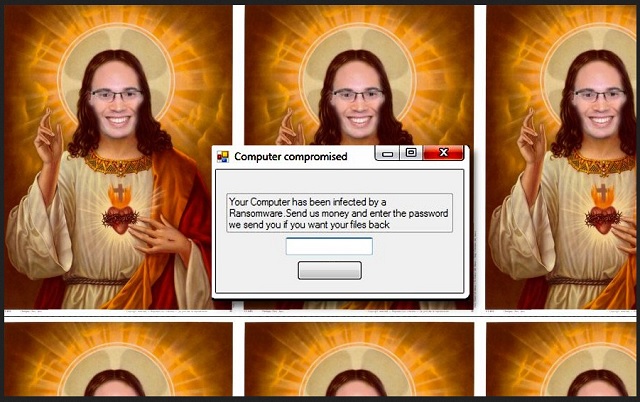I wrote this article to help you remove Viro Ransomware. This Viro Ransomware removal guide works for all Windows versions.
Viro is a ransomware. If you are infected with it, you are in for a trouble. But not only because it is a member of the most dangerous cyber family. Viro comes in a bundle together with a worm and a keylogger. You get the whole package. You have not one, not two but three different infections on board. However, according to researchers, Viro is kind of unfinished. It doesn’t work properly.
The worm and the keylogger also seem to not perform as other infections of their kinds do. Yet, this does not mean you are safe. On the contrary. These infections can and will cause you damage. The keylogger doesn’t steal passwords and other valuable data but it does go after your browsers. It targets your browser history and steals browser-related data. The worm also causes problems. Don’t let yourself be fooled by the Viro`s unfinished status. Delete it immediately as well as its two companions. The sooner they are gone, the better.
On the other hand, the ransomware is perfectly able to lock your data and this is exactly what it does. It locks your files. It also changes your Desktop wallpaper with a holly-themed picture. The picture is of a well-known Jesus iconography but Jesus`s face is replaced with a pic of a smiling individual. Aside from that you also see the “Computer compromised Your Computer has been infected by a Ransomware. Send us money and enter the password we send you if you want your files back.” message all the time. The pest forces this pop-up on you constantly. It wants you to panic so it would be easier to blackmail you. The crooks want money. Well, this is not surprising at all.

Ransomware pieces usually work like this: they state that if you pay, they will free your files. Nonsense! This is a scam and the hackers will not keep their promise. So don’t expect them to. Their only goal is to get to your bank account. Don’t even think of giving them money. It guarantees you nothing. And do not forget that you are dealing with a pest which is currently under development. This makes it even worse for you. The so-called decryptor you are supposed to pay for may not even exist. Don’t be gullible and delete all three infections ASAP. Their status can change anytime and then things will get worse. Use our removal guide and clean your PC.
How did you get infected? Well, Viro uses the standard infiltration methods like spam email attachments, fake program updates, fake torrents, corrupted links and ads, etc. Be always on the alert. Proceed with caution when you receive an email from a person you don’t know. Don’t rush to click it open and don`t download its attached file. Also, be careful when installing updates/programs.
Take your time to read what you are agreeing to. Don’t skip steps and read the fine print. Avoid suspicious pages and illegitimate download sources. It all comes down to you and your carelessness. If you are negligent, you are an easy target. You make hackers` job much easier. Don’t. Instead, protect yourself and your machine. The only way to do that is to always be vigilant.
Viro Ransomware Removal
Method 1: Restore your encrypted files using ShadowExplorer
Usually, Viro Ransomware deletes all shadow copies, stored in your computer. Luckily, the ransomware is not always able to delete the shadow copies. So your first try should be restoring the original files from shadow copies.
- Download ShadowExplorer from this link: http://www.shadowexplorer.com/downloads.html.
- Install ShadowExplorer
- Open ShadowExplorer and select C: drive on the left panel

- Choose at least a month ago date from the date field
- Navigate to the folder with encrypted files
- Right-click on the encrypted file
- Select “Export” and choose a destination for the original file
Method 2: Restore your encrypted files by using System Restore
- Go to Start –> All programs –> Accessories –> System tools –> System restore
- Click “Next“

- Choose a restore point, at least a month ago
- Click “Next“
- Choose Disk C: (should be selected by default)
- Click “Next“. Wait for a few minutes and the restore should be done.
Method 3: Restore your files using File Recovery Software
If none of the above method works, you should try to recover encrypted files by using File Recovery Software. Since Viro Ransomware first makes a copy of the original file, then encrypts it and deletes the original one, you can successfully restore the original, using a File Recovery Software. Here are a few free File Recovery Software programs:

